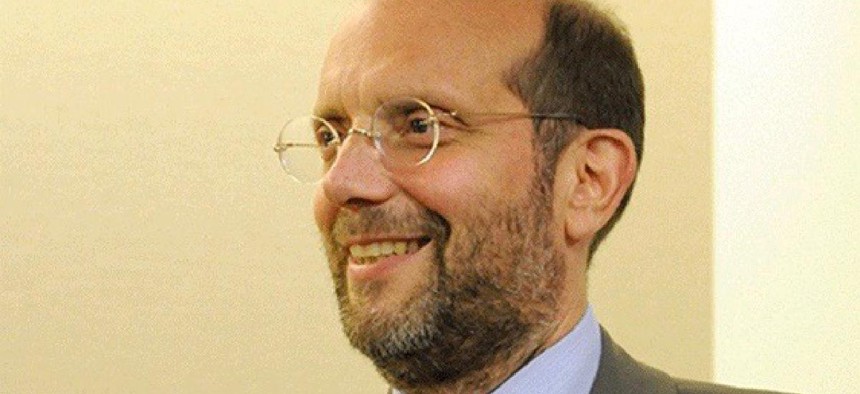Amid the largest restructuring of city homeless services in decades, members of the city council’s Committee on General Welfare pressed Steven Banks, commissioner of the newly minted Department of Social Services, on the impact that his agency’s sweeping reforms will have on nonprofit providers.
Banks began his testimony by stressing the importance of contributions from nonprofits during the recently concluded 90-day review of homeless services, specifically citing client focus groups convened by the Coalition for the Homeless, Picture the Homeless and VOCAL.
He also highlighted recommendations that directly resulted from dialogue with nonprofits, such as a push to rationalize shelter provider rates. Advocates, such as the Human Services Council, have repeatedly decried the city Department of Homeless Services’ current indirect cost rate of 8.5 percent. HSC, for example, claimed in written testimony on Thursday that actual overhead rates can be as high as 35 percent, citing a 2008 Bridgespan Group report.
Nonprofits have praised several other recommendations, including proposals to target services and rental assistance for clients with mental health needs cycling between jail and homelessness, to implement a capital repair program for shelters in poor condition and to create a more robust aftercare program for clients at risk of ending up in jail or psychiatric hospitals.
In addition to these programmatic shifts, Banks added that government partners must recognize the long history of underfunding that has contributed to the current state of affairs at many nonprofit-run shelters.
“If the roof couldn’t be fixed because we didn’t provide the funding and the ability to do it, that’s one thing. If there are conditions that built up for other reasons, that’s another thing,” Banks said.
Some council members suggested strategies for amplifying the voices of nonprofit service providers and homeless individuals as programmatic and structural changes are rolled out. For example, Councilman Stephen Levin, the committee’s chair, urged Banks to include representatives from community-based organizations and homeless advocacy groups on the soon-to-be created Interagency Homelessness Accountability Council, which will coordinate homeless services under the direction of Deputy Mayor for Health and Human Services Herminia Palacio.
“As you’re well aware, the last thing that we want is to have something of an echo chamber within the administration,” said Levin.
Other council members expressed frustration over nonprofits that continue to face challenges getting paid, despite providing services. Councilman Rafael Salamanca, for example, mentioned Acacia Network’s struggle to bring one of its sites in The Bronx under contract with the city, even though DHS initially approached Acacia Network to take over the building.
“The violations that exist in the site are not Acacia’s doing,” Salamanca said. “Why are they being held accountable? Why is there a delay in the contract if they were not responsible from the very beginning?”
Banks responded that regardless of how violations came to be, any given provider must have a plan of corrections in place to address outstanding violations in order to have their contract registered.
“Where there are buildings that don’t have certificates of occupancy, or there are units with significant violations, we have to work with the provider for a plan of correction before we can get that contract registered,” Banks insisted.
He also said that DHS has been making loans to Acacia as it awaits the registration of its contract, and that the agency planned to continue loan payments. However, nonprofits have questioned whether such loans are sufficient to offset the cost of late contract payments. As HSC General Counsel Michelle Jackson mentioned in her written testimony, nonprofits are often forced to borrow against a line of credit to meet payroll; the Brooklyn-based organization CAMBA reportedly absorbed $375,354 in interest payments last year alone.
“I also want to highlight that Acacia has been helpful in working with us to identify units that can be converted back to permanent housing, because the $60 a day in rent (per family at the site) is more than we would pay to restore units to permanent housing,” Banks added.
In addition to fostering cooperation on contract registration, Banks expressed hope that city Comptroller Scott Stringer would align future audits of homeless shelters with DHS’ inspection regime. Both Stringer and state Comptroller Tom DiNapoli have produced damning audits of the city’s homeless shelters, highlighting building code violations and rampant health and safety concerns.
“We’re going through buildings where things have built up for many years,” Banks said. “If you went out and monitored a building tomorrow, even though we’ve made thousands of repairs in the last two months, you may find a building that’s got challenges. For us, it’s more useful to take a joint approach and focus on where the work has been done and identify areas where the work still needs to be done.”
Those comments tied to a larger theme of inter-governmental cooperation, including with state regulators such as the Office of Temporary and Disability Assistance, an agency that has butted heads with Banks in repeated public feuds.
“The city cannot do this work alone,” said Nicole Bramstedt, director of policy for the homeless services provider Urban Pathways, who attended Thursday’s hearing. “The city and state need to work together with regard to the provision of homeless services in New York City, particularly the roll out of the new supportive housing units, as well as the city/state task force regarding state prison discharges to DHS shelters.”
On that point, Levin pressed Banks on whether city and state agencies had specifically communicated about plans to convene the proposed task force.
“We’ve communicated to our state partners our desire to do this work together,” Banks began slowly.
“They’ve communicated back?” Levin interjected.
“We’ve communicated to our state partners our desire to do this work together,” Banks repeated to a smattering of laughter throughout the chamber.
This article was first published on our sister publication, New York Nonprofit Media, on April 22.


